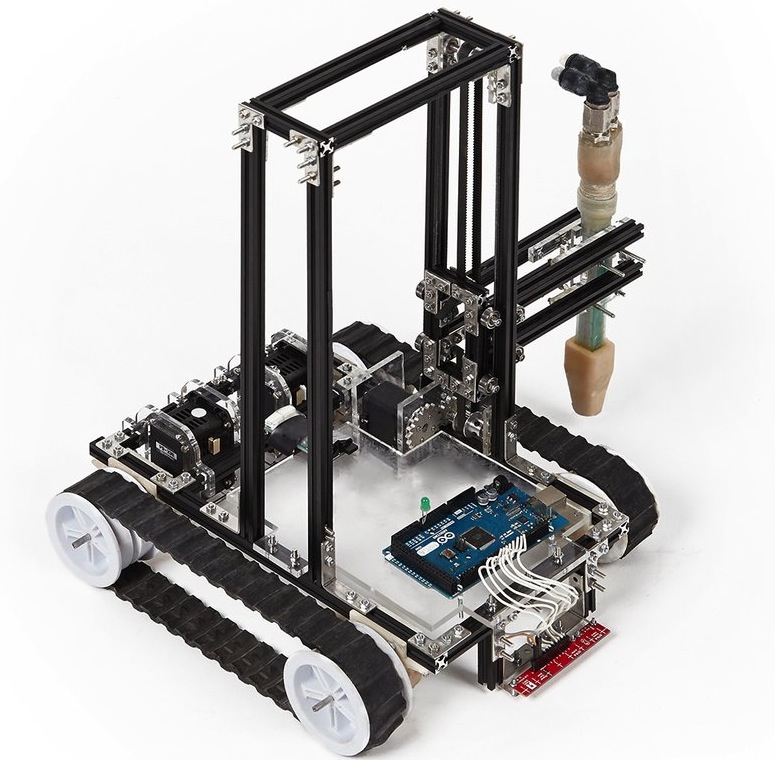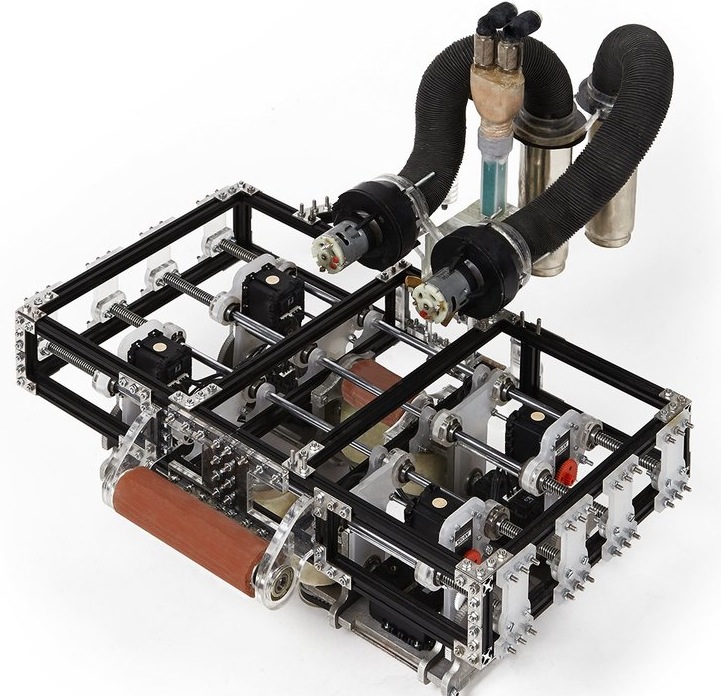Researchers in Spain have re-imagined the 3D printing of buildings by proposing wall-climbing mini-bots instead of a huge gantry to support a computerised print head.
If realised, this vision would set printed buildings free from the constraints of existing approaches to 3D printed construction – or “additive manufacturing” – in which the size of the object being printed can’t exceed the reach of the robotic arm holding the print nozzle.
Researchers at the Barcelona’s Institute for Advanced Architecture of Catalonia (IAAC) set out to build a family of small, agile robots that can create structures much larger than themselves. The prototype ‘bots use suction to climb vertical walls without falling off, or run around the rim of a structure, gripping the sides with clamps.Â
They are controlled by computer-aided design software (CAD) and are fed the cementitious material for squirting into place by long, flexible hosepipes.

In the process described on the project’s website, the first step is for “foundation robots” to make the footprint by printing the first 20 layers of the structure. They move according to a predefined path, either in a continuous loop, or back and forth. The robots, which are 370mm high and 350mm wide, are connected with pipes to a material supplying, controller robot.

With the base complete, “grip robots” are clamped on to build up the structure by printing more layers of material. Their nozzles can tilt to create curves in the walls.

The team claims that the grip of these ‘bots is strong enough, and the curing speed of the material is fast enough, for the robots to build inward – horizontally – to make ceilings.

To reinforce the shell, “vacuum robots” climb all over it, printing additional layers.
What’s interesting is how low-tech and open-source this project has been. Wired magazine reported that the robot frames are constructed from trademarked Erector model kit, and the code was developed using the open source programming language, Processing. The researchers, led by Sasa Jokic and Petr Novikov, just this month shared a paper on the technical details of their robots.Â

The robots, measuring just 370mm high and 350mm wide, are connected with pipes to a material supplying, controller robot (IAAC.net)
The “special sauce” may be how it all comes together, including the material the robots squirt. The researchers say their patent-pending method dubbed “Mataerial” uses innovative extrusion technology to defy gravity. “Unlike 2D layers that are ignorant to the structure of the object,” they write, “the 3D curves can follow exact stress lines of a custom shape.”
The IAAC project opens a new front in the development of printed buildings. Many consider the leader in the field to be Behrokh Khoshnevis, of the University of Southern California’s Viterbi School of Engineering. Last year he said his robotic extrusion method would, within two years, be able to print a concrete shell of a 2,000 sq ft house in less than 20 hours.Â

The robots, measuring just 370mm high and 350mm wide, are connected with pipes to a material supplying, controller robot (IAAC.net)
Then in April this year came reports that a Chinese firm had printed the components for 10 houses in a single day. By adding labour to assemble the components, the speed and productivity of 3D printing seemed to go through the roof.
But both these approaches are driven by a repetitive manufacturing model, and the structures are limited in size. The “minibuilders” idea pushes the boundaries by promising to remove limits both to the size of the structure and the degree to which it can be customised.






